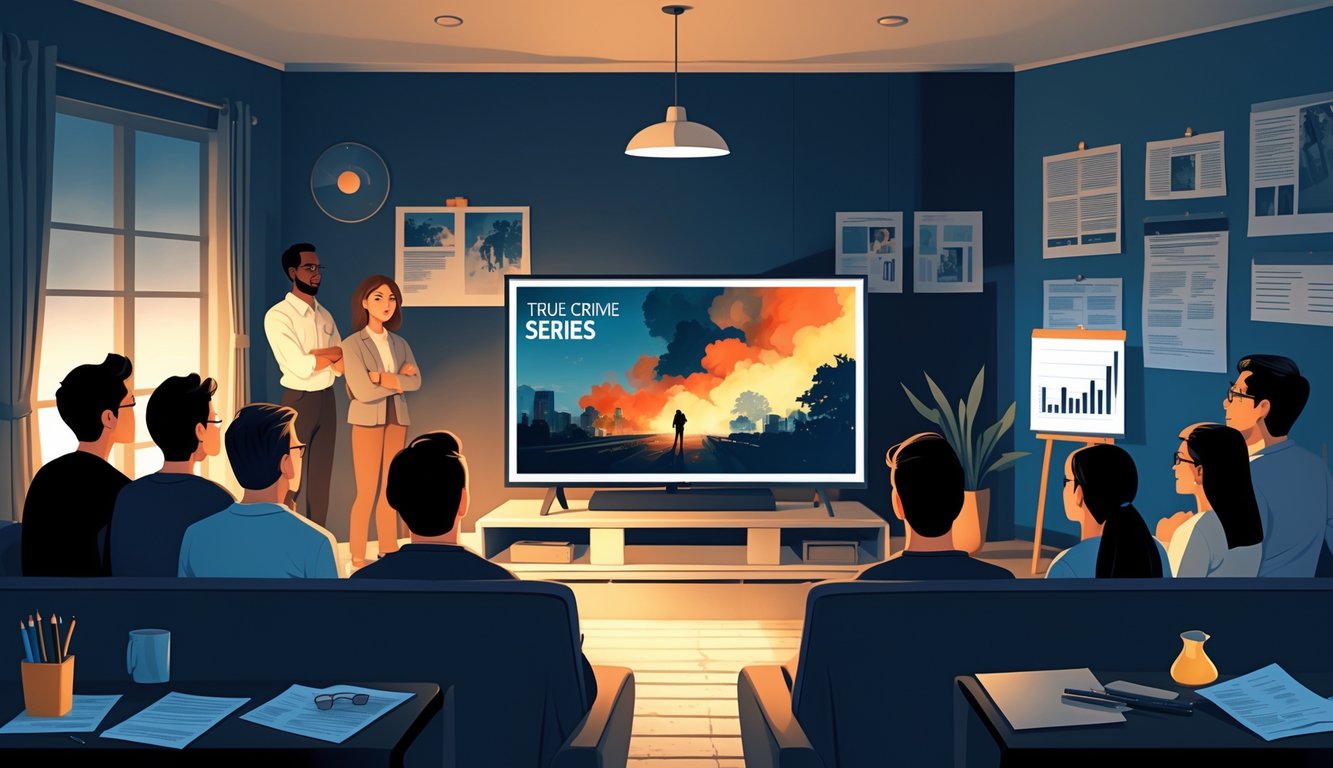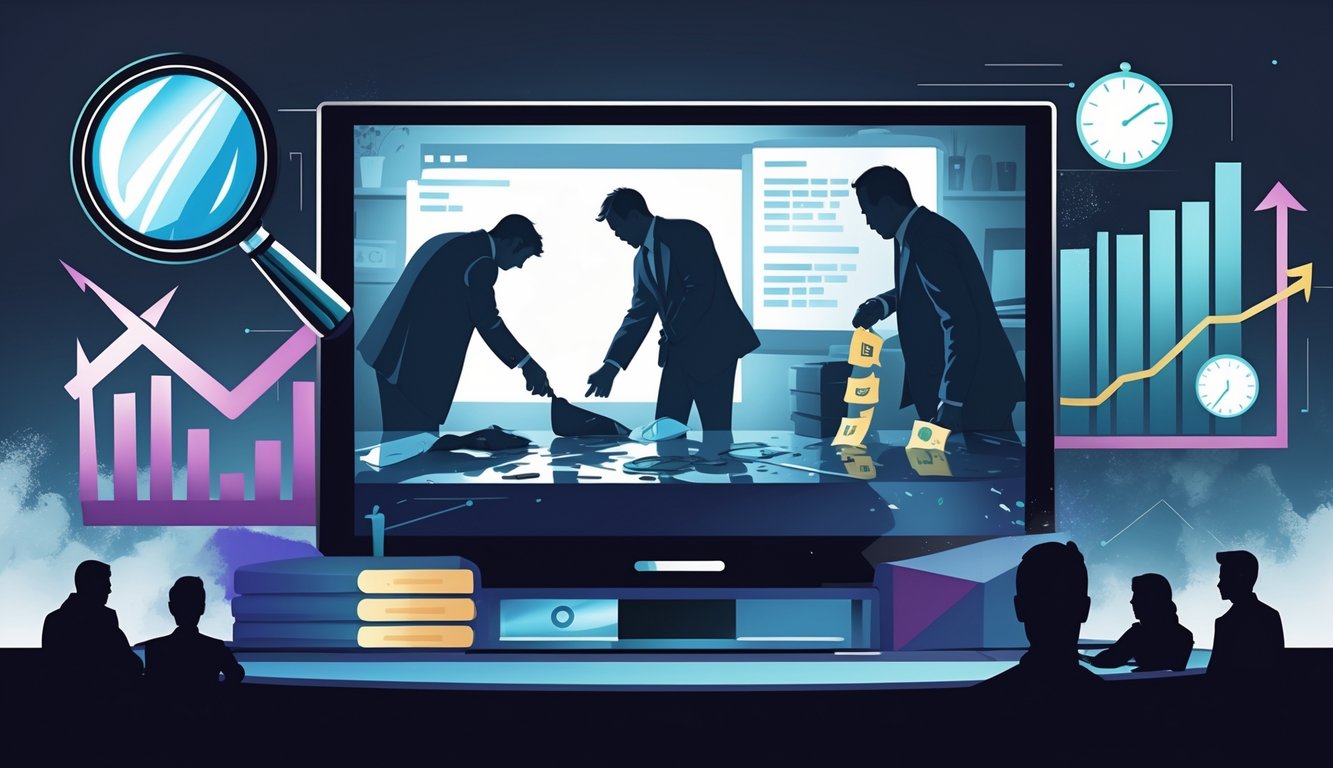
Okay, so here I am, scrolling through endless titles at 1 a.m. and, wow, yet again I’m sucked into another true crime rabbit hole. I swear, these shows multiply faster than my unread emails. Algorithms? Obsessed. Me? Annoyed at myself for being obsessed. But let’s be honest: true crime keeps smashing ratings on Netflix, Hulu, whatever—pick your poison. I guess it’s because, deep down, most of us are nosy, a little paranoid, and kind of love poking at the idea that something horrifying could be happening, like, two doors down. And yeah, I binge these things the way my friend reads cereal boxes looking for carcinogens—hyper-aware, totally unable to stop.
So, apparently, Ingrid Johnson at Virginia Tech teaches some mega-class (500 students?!) about why this genre is so addictive. I’m not sure if that’s impressive or just proof we’re all a little broken. Reminds me—my old roommate once did a forensics internship, and she couldn’t even watch “Making a Murderer” without pacing like a caged animal. But ratings? They’re just the tip of it. Book sales? 1.6 million true crime copies in 2018. Who are all these people buying murder books? Is it you? Also, 2,800+ true crime podcasts? That’s not normal.
No one talks about how these shows turn you into a person who double-checks the locks at midnight or gets weirdly smug when you spot a plot hole before the “experts” do. Psychologists keep saying it’s about our love of justice or closure or whatever, but then, why does my neighbor live-tweet every episode like it’s the Super Bowl? Maybe it’s just easier to care about fictionalized disaster than fold laundry. Every time I grab a mismatched sock, I’m reminded: streaming platforms know we’ll never get tired of this stuff (they’re banking on it).
The True Crime Boom: Why Audiences Are Obsessed
Every time I hit play on another true crime doc, I get this weird jolt—real-life chaos is way messier than anything scripted. Is it stress relief? I mean, it can’t be. There’s nothing relaxing about a murder count climbing on your TV. Still, my queue is overflowing, and I honestly don’t remember adding half these shows. My friends? Same story.
Cultural Fascination with Real-Life Crime
Honestly, why does my group chat go nuts over a particularly gruesome episode but not, like, the latest Marvel thing? There’s this feral craving for “real” crime—no filters, no happy endings, just chaos. Psychologists keep popping up with theories about how we’re all secretly detectives or obsessed with the “why” behind the madness. Maybe. But most of us can barely parallel park, let alone plot a heist.
I read this deep dive that claims true crime pokes at something primal: safe fear, armchair curiosity, and, for me, the sweet relief that I’m not the one getting interrogated. I still jump every time they flash a mugshot, but I never look away. Is this some weird cultural handshake? Like, if you can name three infamous cases, you’re in the club? And the details never fit in a movie, so the series format just keeps churning.
One stat I can’t shake—over 1.6 million true crime books sold in a year, which is so much higher than I expected. So, I’m not the only one glued to crime maps and trial transcripts. Here’s the source, if you care. Maybe escapism isn’t about dragons or space battles anymore—it’s about real-life disaster, but with popcorn.
Rise in Popularity Across Streaming Platforms
My algorithm knows me better than my own family. Every month, there’s another “must-watch” miniseries about some cold case or scammer. I can’t keep up. Even when I try to escape, the next episode suggestion is like, “Hey, you just watched murder—want some more murder?” Sometimes I click just because the thumbnail is hideous and I want to see how bad it gets. I hear the Netflix “ta-dum” in my sleep.
Streaming services figured out that true crime equals engagement. 2,800+ podcasts exist, and new documentaries are always on Netflix’s trending list, especially in North America and Europe. There’s this weird line between “educational” and “disaster tourism,” and I’m not sure which side wins. If I see another “shocking twist” trailer, I might actually scream. But it works. True crime just keeps breaking records every single quarter. Is this good for us? I doubt it. But it’s great for streaming giants and anyone who needs a group chat icebreaker.
The Role of Empathy and Identification
Trying to predict when I’ll feel empathy during these shows? Impossible. Sometimes I’m rooting for the detective, sometimes I’m irrationally hoping the accused is innocent, especially if they show childhood photos. A psychologist in a science explainer claims we all have this deep empathy that kicks in when we get backstories. I’m not sure I buy it.
It’s not just about the victims, either. Sometimes I get wrapped up in the cold bureaucracy, or I’m just smugly “solving” the case before the reveal—like it’s some dark trivia night. But after three minutes of crime scene photos, my empathy evaporates. Why does bingeing crime feel like reading a legal thriller or watching a trial live stream? No clue. Maybe it’s easier to care—or pretend to—when the disaster is happening to strangers, behind a screen.
Key Drivers of Ratings Success for True Crime Series

Last week my cousin called for advice on which streaming service had “the goriest” new docuseries. I almost hung up. This isn’t about “hype”—it’s about how easy it is to access and how weirdly hungry we are for safe, distant chaos. TV didn’t survive the streaming revolution by accident; it’s all by design.
Streaming Accessibility and Binge-Watch Culture
Don’t get me started on Netflix’s auto-play trailers or that weird paralysis when you can’t choose between rewatching “The Staircase” or clicking something new that’ll eat your whole night. True crime blows up because streaming makes it so easy—no waiting, no reruns, just endless, on-demand disaster.
Shows purposely end every episode with a cliffhanger. It’s like scratching a bug bite—you know you shouldn’t, but you can’t help it. Even my aunt, who hates “scary stuff,” watched “Making a Murderer” straight through and texted me wild legal theories for days. Sure, 1.6 million books sold in 2018, but that doesn’t touch the tidal wave of streaming content (see the sales spike). Algorithms trap us by suggesting the next thing before you’ve even processed the last. Catching up is impossible, and streaming doesn’t care.
Escapism and the Psychology of Danger
So, yesterday in my media class, a student said true crime lets her “feel unsafe without the risk.” Not sure if that’s healthy, but I get it. We want to flirt with fear but stay comfy on the couch. Apparently, women are the main audience, and I keep hearing friends say they watch to “learn how to avoid being a victim.” Is that real? Maybe.
Studies say these shows give us controlled chaos—violence, trauma, danger, but usually some sense of order by the end, or at least a courtroom scene. My neighbor once said about “Serial” that people want to “solve” what someone else suffered, as if that’ll keep them safe. When real cases like Adnan Syed’s get overturned, it just adds fuel to the obsession (read more). And somehow, the ritual is always the same: snacks, horror, relief that it’s not your life. Control? Maybe. Or just habit.



